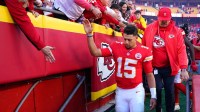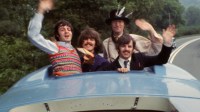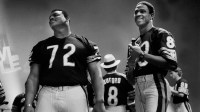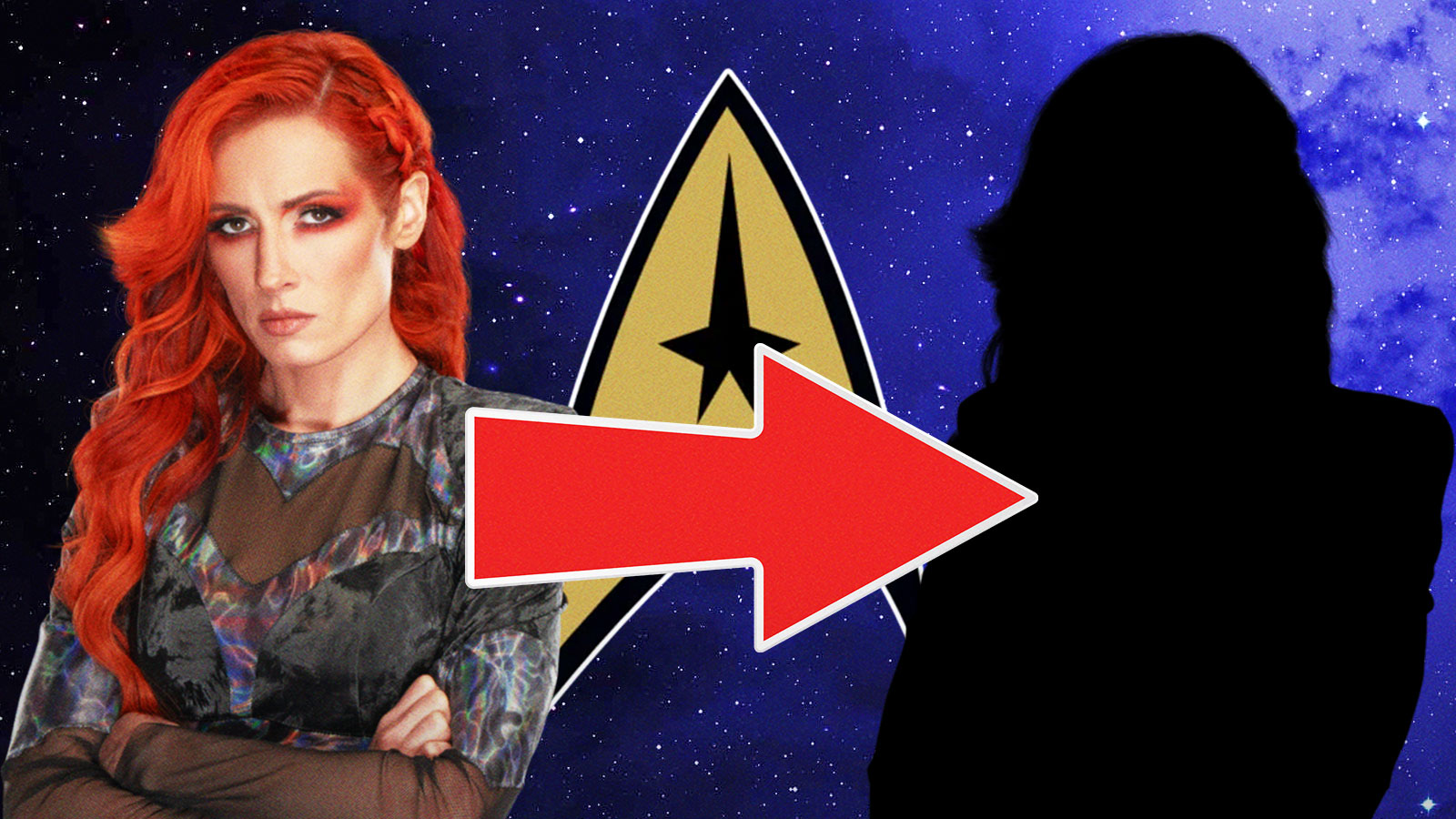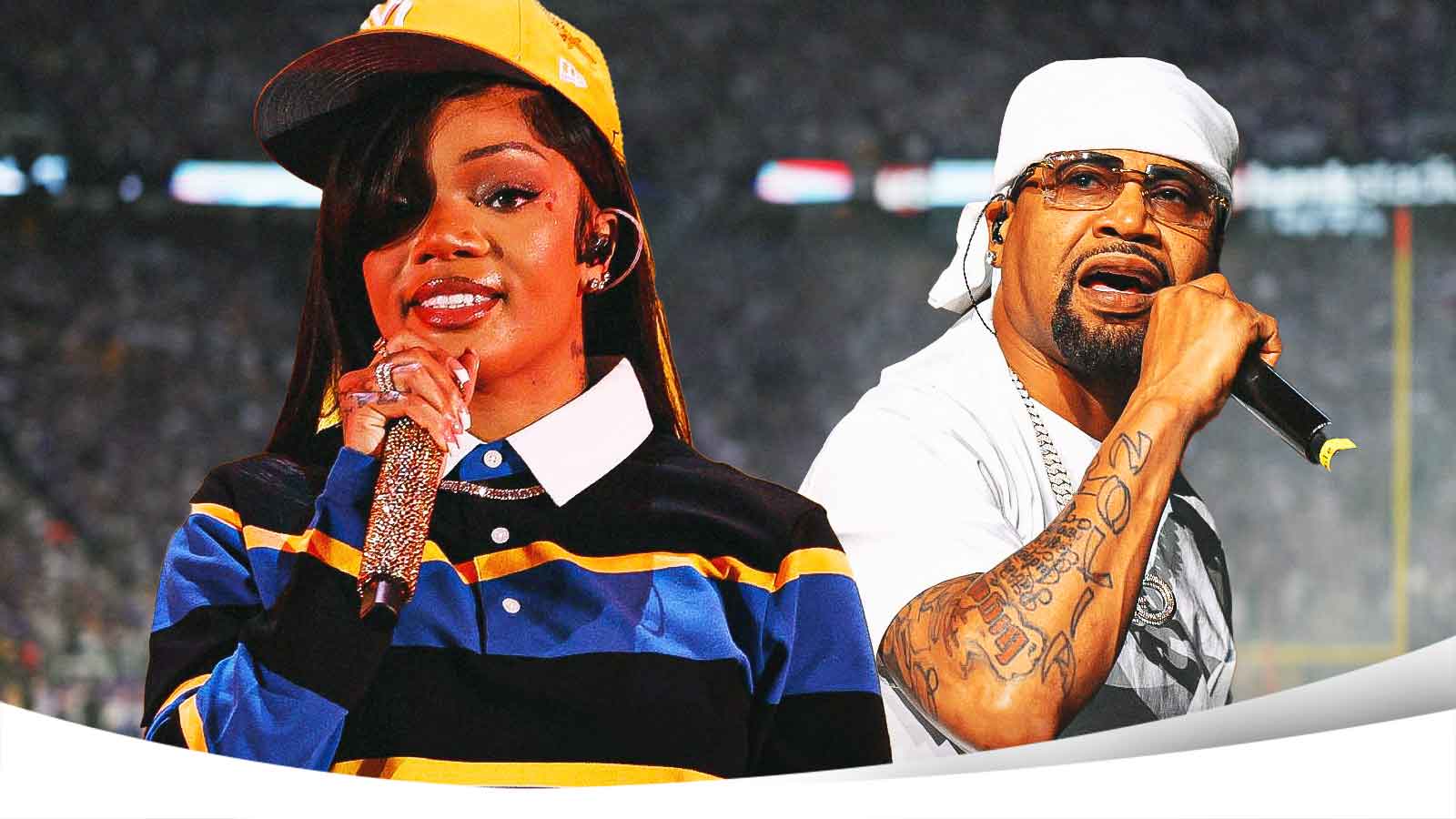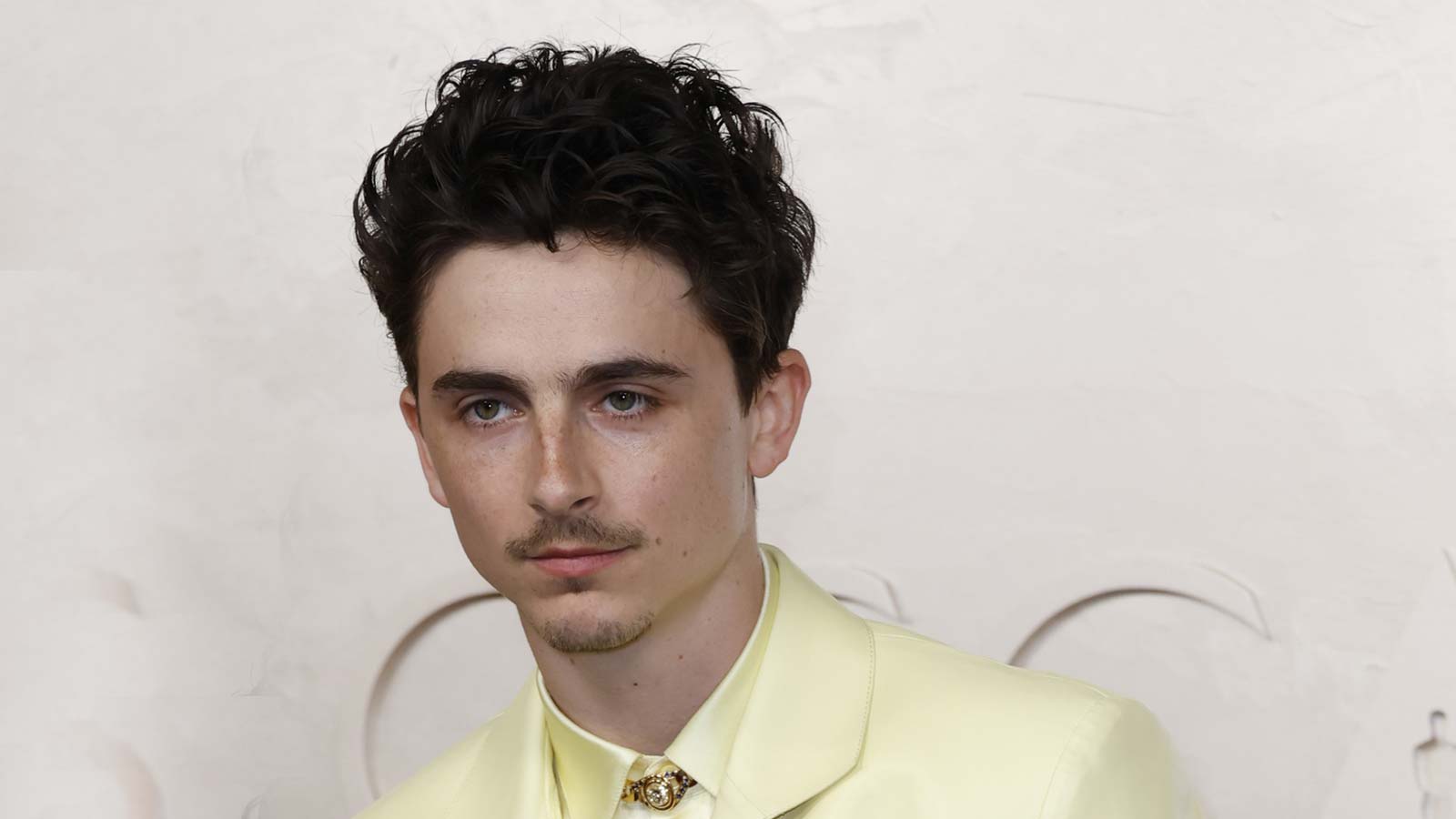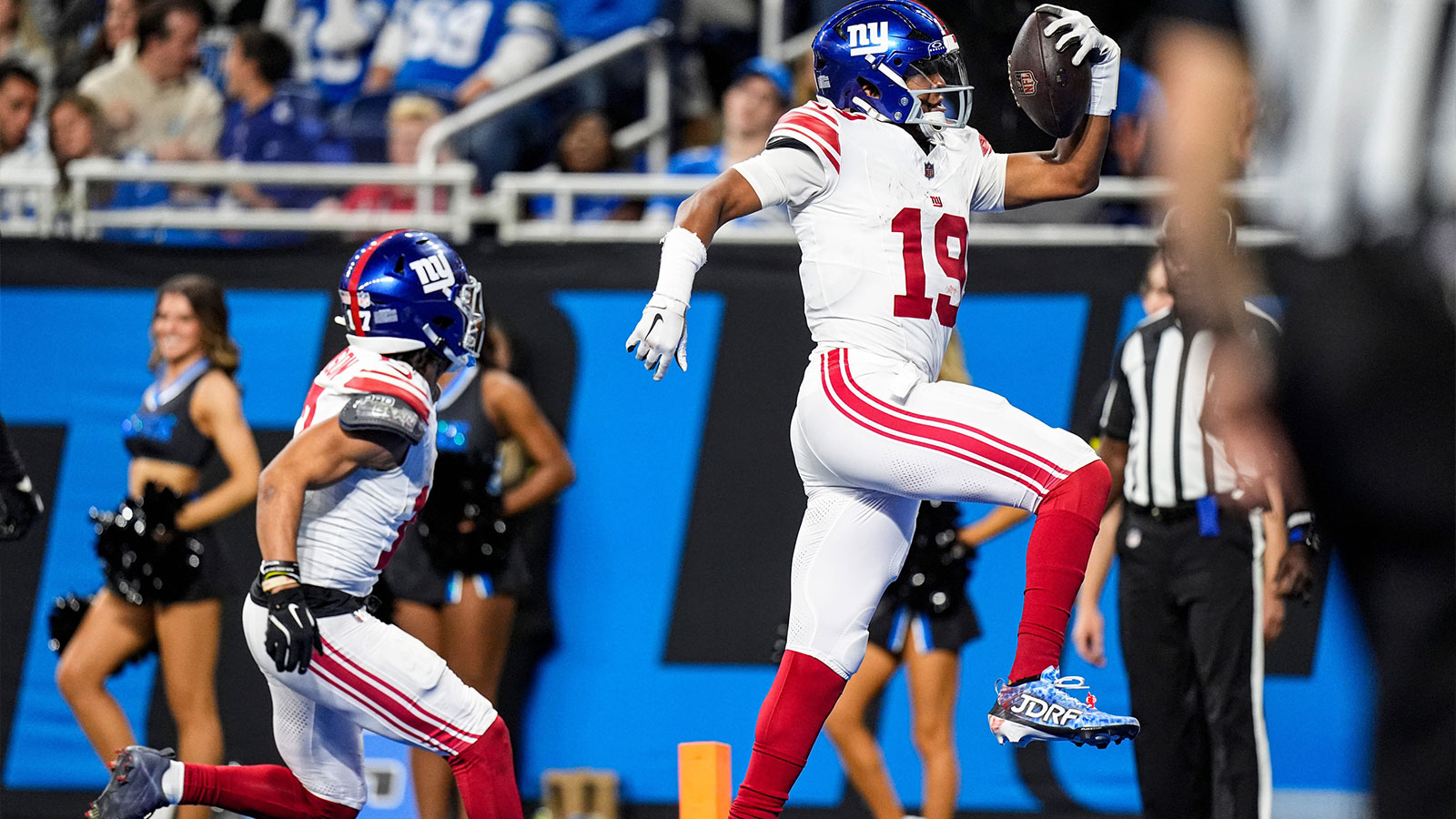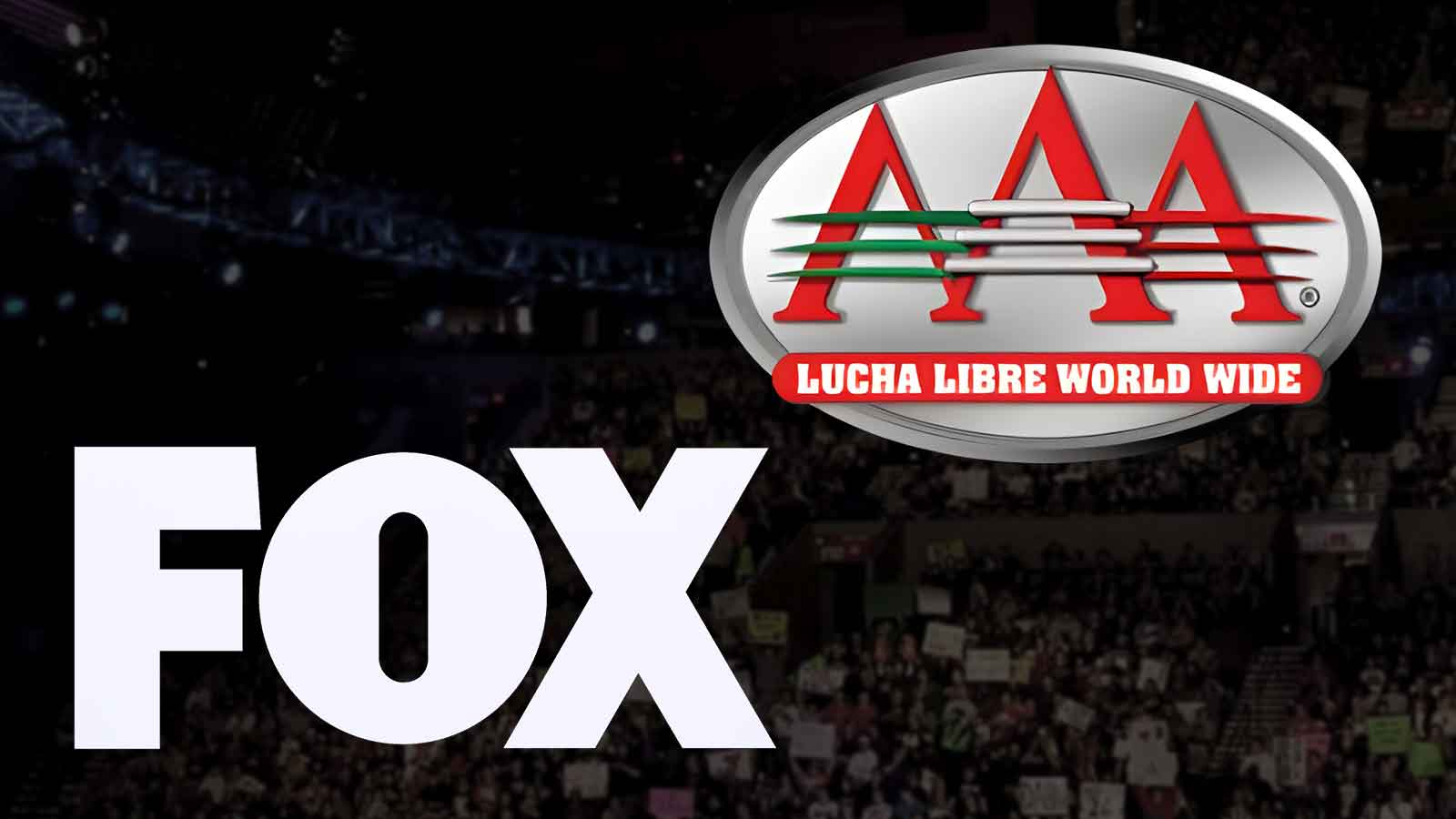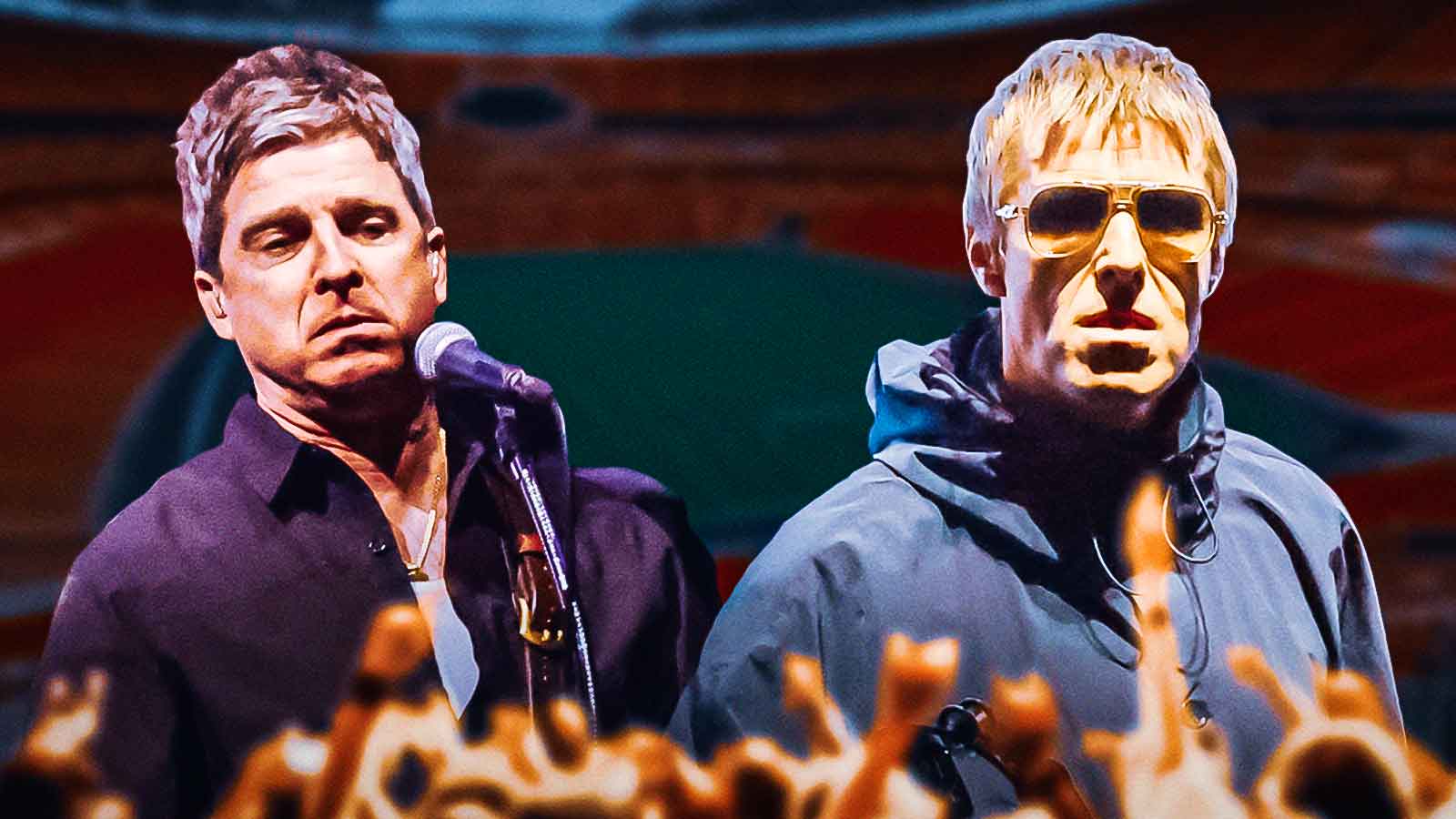Winnie-the-Pooh: Blood and Honey 2 will creep into theaters Tuesday. Composer Andrew Scott Bell returned for the sequel alongside director Rhys Frake-Waterfield.
The first film launched the Twisted Child Universe (TCU) last year. Made on a small budget, Winnie-the-Pooh: Blood and Honey was a success and grossed nearly $5 million at the box office.
For those unfamiliar, Blood and Honey put a horror spin on the iconic children's IP. Christopher Robin abandoned Pooh and Piglet in the Hundred Acre Wood to go to college. Upon his return, Pooh and Piglet seek revenge.
In Winnie-the-Pooh: Blood and Honey 2, Pooh and Piglet make their way to Christopher's childhood town. They are livid after the events of Blood and Honey.
ClutchPoints spoke with composer Andrew Scott Bell ahead of the film's release. Speaking from his home studio, he allowed us to hear snippets of the animalistic new tracks.
Andrew Scott Bell, Winnie-the-Pooh: Blood and Honey 2 interview
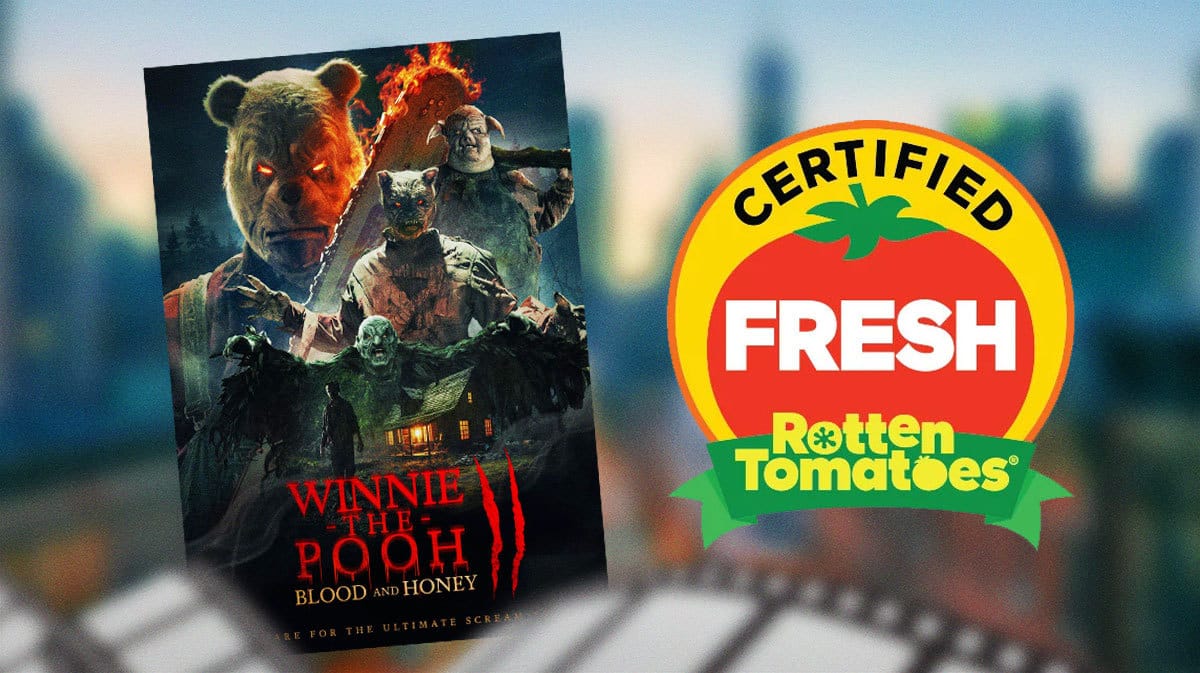
ClutchPoints: Congratulations on Winnie-the-Pooh: Blood and Honey. When I was in Tampa a few weeks ago, I saw your vinyl on display.
Andrew Scott Bell: Wow, that's fantastic. I'm really proud of my work on that first movie. That's my first vinyl release for one of my soundtracks, so that was a big moment for me personally.
I signed some records at record stores in LA, and I did a signing at a place called Dark Delicacies, which is a horror shop. They sell vinyls, but they sell books and toys and clothes and all sorts of memorabilia, but it's all mostly horror-themed.
That was really cool to have a signing that I thought maybe five people would show up to, but there were like hundreds. It was a full day and it was really gratifying to get to meet people and have that face-to-face with someone who's a fan of my work.
CP: When I first heard about Blood and Honey, it was pitched to me as a “Winnie-the-Pooh horror movie.” So how was it pitched to you and what was your reaction to it?
ASB: I didn't get the call at first. I had heard about the movie around town, around Los Angeles, so I'm the only person on the film crew who's working on the film or in the film from Los Angeles, everyone else is in the UK.
There's some saying that like Hollywood is the biggest small town in America because everybody knows somebody who knows everybody. But for me I like to think of the horror community in Los Angeles as even smaller and tight[er].
That is to say that I heard about this movie, whisperings like, “Have you heard somebody's doing a Winnie-the-Pooh horror movie?” And I looked it up and I just thought it just sounded so bonkers and fun.
And what a unique opportunity to take advantage of a well known IP for independent filmmakers to use that as a means to gain recognition and to put themselves out there. I just thought it was really smart. So I reached out to the director Rhys [Frake-Waterfield] on Instagram, where it was already going viral — I think from some screenshots that were posted on IMDb — and he was already getting hate messages, people saying like, “You're ruining my childhood!”
He posted [that] on his Instagram story, [and] that's what I want to do. I hit reply and I said, “Can I help with that?” and I put a violin emoji and he seemed to think that was funny.
We were chatting from there about musical ideas and stuff. I didn't know at the time, but I found out later that I knew the cinematographer, Vince Knight. I had met Vince in LA at a film festival many years before, and we kept in touch, but I didn't know he was working on the movie when I reached out to Rhys.
So when Rhys saw that we knew each other, he asked Vince and Vince was like, “You've got to hire Andrew.” So I have Vince to thank for giving Rhys confidence in this stranger who just messaged him out of the blue.
CP: I listened to an old interview of yours where you were talking about how, at least on this first film, you didn't have an orchestra, so you were doing a lot of the playing. I believe the Blood and Honey sequel has a bigger budget, so how did that affect you? Do you now have an orchestra?
ASB: Well, I will say on the first movie, not only did I not have an orchestra, I mean, there just really wasn't a budget at all because they made the movie for like $30,000 to $50,000. So a composer's share of that small amount of money is not a lot. I spent that budget on gas and hotels, and I paid a friend of mine for a violinist who's very talented, um, he goes by Clejan on TikTok, and people call him the Trap Violinist.
I sent him the music to one of the scenes, because I really wanted that human emotion for the end of the film, and so the small music budget that I had was eaten up in travel, gas travel to San Francisco to get the beehive violin and then the hotel for my manager and I. Where we picked up the violin, we stayed the night and then we drove back the next day.
So when I say that the music budget was tiny, it was eaten up by one hotel night, some gas and a couple hundred bucks to pay a friend of mine, then the music budget was gone. So in comparison to that, there is a more sizable music budget on this one, but it's still not to the level of a full orchestra.
I'm still doing the same techniques that I did on the last film, which is to say that I'm writing on my computer and then recording myself playing the violin, the cello, the trumpet — though I haven't used the trumpet as much as on the last film.
We're doing a lot more low brass stuff, so I have my trombone back here. And I have this new instrument that I can calling the “Tigger Tube,” which is actually just my trombone mouthpiece hooked up to [a pipe].
When we first moved in, I had to fix a pipe in this house that we are in now. And I have leftover soft piping from the plumbing of that, and I was like, How does it affect the pitch when I bend this soft pipe if I play through it?
So it's this weird [sound] that's kind of sounds like a trombone. You might be able to do something similar to the trombone if you wobble it like that, but when I pitch it into the computer, it just sounds crazy.
With all the drums and everything, it's as energetic and hectic and crazy as you would expect Tigger might be. There's a couple of other [tracks where] it's not always crazy like that. Sometimes, when he's like standing there, you can tell he's just ready to bounce, but he's just standing there holding it back, it has a more subdued feel.
[With] little things like that, I add a lot of flair to the soundtrack by playing and layering it myself. I have 40 tracks for violin recordings.
Just because a movie might not have the biggest music budget doesn't mean that I can't bring a big sound, as long as I have the time that I can do that and spend recording and layering myself and all that. I want every project I work on to sound as good as I possibly can, even if they don't have the $100,000 music budget for the full orchestra and all that.
CP: I was going to ask if Tigger has a cue, because I know he's going to be introduced in this movie, but that sounds like you have an instrument that's very distinct to him — it sounds very animalistic. How would you describe Tigger and his sound as someone who has seen the film?
ASB: He's just a ball of energy and it's just exciting to get to write music for someone for a character that [has] so much energy.
I mean, Pooh in the first movie kind of lumbers and walks slowly [in] a Michael Myers type [way]. He has a lot of the same thematic material — big drums, slow. There's that one that I think people will recognize from the first movie. But then you see Tigger in the background. So there's a little flair of Tigger coming up.
This is a Winnie-the-Pooh movie [with] unique and distinct characters that I get to play a little bit thematically with, and I try not to always think in terms of leitmotifs like this is this person's theme and this is Tigger's theme. But for something like this, it is fun to think in that way because it brings an extra element to the watch.
There's a bit of a flair for Owl when he does something frightening — I have these maracas that were given to me from Africa. I've always wanted to use them and I've never really found a film that calls for it. But to use them with Owl has been really fun because he has these giant feathers that are always kind of shaking and it felt to me that would be a motif that we could use whenever he's around.
I also have this Jameson bottle made for me by the guy who made the beehive violin and the bear cello. And he just was like, “Hey man, why don't we put some coyote toe bones and teeth” — I found coyote bones on eBay for like $20 — so I layer the maracas with these bones and it's just like the bones have their own sound and it's just chilling.
I never want to be like, every moment of Tigger killing someone has to have the Tigger Tube. It's used in the right moments, if that makes sense. Kind of like when you're watching like Jurassic World or any of the Jurassic Park sequels — you're not always hearing the Jurassic Park theme. There's new themes and stuff like that.
I've never worked on a sequel before. So this is fun, new territory for me to get to revisit themes I've written and play them in a new way and, or play them in the same way. It's an interesting canvas to paint on.
CP: Every composer has their own processes. Some of them that I've talked to don't even like scoring to picture, but I feel like for a horror movie, it probably is a little hard to do that. So have you been able, or did you start conceptualizing well before you got any footage?
ASB: I'm a little bit different than the composer that you just described in that I love writing to picture. I actually prefer writing to picture because sometimes in my experience, the few times that I've experienced writing to a script and coming up with themes, there's something about the movie that changed from script to screen.
And I don't know if that could be a function of working in indie films instead of studio pictures — I've heard Hans Zimmer likes to write to script, and that might just be that what's on the screen on the page for a Christopher Nolan movie is going to end up on screen exactly as he wants it on the page. But to me, my experience has been not that it changes necessarily, but something changes.
I wrote the music for this Lifetime movie called Psycho Storm Chaser, and it was about a guy who goes around killing people during hurricanes and framing his victims as though they died tragically from the storm.
When I read the script and talked to the director, it was all very slasher-y, like the horror was the killer, and the danger was the killer. And these people staying behind during a hurricane were in danger because of the killer. But that's because there wasn't lightning strikes and thunder roars and rain necessarily in the script as much as there was in the end product.
So when we started to see dailies and when I started to see a rough cut, we still kept some of the music I had written from the script, but the main themes were totally different. It started to feel bigger, like the music had to be part of the storm at times. So we started to write more brass, less strings, big, huge storm-type drums.
And that just wasn't there in the script as much as it was when we started to watch the edit — the storm became its own character in a way that it wasn't in the script. So I'm a very visual person and I prefer to wait until picture.
I've been scoring to picture to answer your question on this film with the different cuts, they send a couple of different cuts. So then you just tweak the music to the new cut, but it's been really fun to see how much bigger this movie is, how much bolder.
CP: Can you give me an example of how the sequel is bolder?
ASB: It's just bold in it is expanding the story for indie directors. It's not a major studio — we run the Twitter accounts and we all pitch in — [but] this isn't a huge production in terms of studio backing. So for them to expand this movie out in the way of this franchise out in the way that they [did] is bold,
Even just coming off of the success of the first one, which critically, maybe it wasn't successful, but the audience score for a $50,000 movie being at 50% is pretty phenomenal. That means half the people loved it, and half the people hated it.
So coming off of the success of the first film and then saying, “Hey, we're going to listen to criticism and praise and try to make the best movie that we can, that we maybe wish we did, and part of that boldness is the redesign of Pooh and Piglet, recasting Christopher Robin, taking some feedback on the writing.”
They dive into the Winnie-the-Pooh — I guess you would say lore. The first movie had Christopher Robin in it, but then it was about a bunch of girls in a cabin. This is about Chris and Pooh. And, you know, I think that's, I think it's bold to, for an indie film to be about, for an indie slasher to be about not a final girl, I think is bold.
CP: I saw on your Instagram that you have a couple new toys. I know you still have the beehive violin, but are there any other instruments you can show off?
ASB: There's the the bear cello — I think we're calling it the Skullo. It was made for me by the same guy who made the beehive violin.
As you can see, it has a bear skull on it. The idea was to try to let the skull be a resonating chamber and how interesting would going through a hollow skull of a bear be? I mean, obviously, it wouldn't sound like a bear, but just the idea to do that.
But for structural reasons, and I think legal reasons — I think California, you can't buy animal bones or something like that, he was saying — we decided to go with a cast of a bear skull, so it's not an actual bear skull. But it's hopefully achieving something similar in the way that it's hollow and the shape.
Other than that, it's just super fun. He puts some strings on the jaw. So that's the main string up here, but there's also coyote toe bones down here. And then there's these that kind of just dangle, you can just rattle them a little bit. And then there's these cymbals on the side here that vibrate whenever you play anything.
And then my favorite thing are these strings that he put between the jaws. When you put the right effects and reverb on it, it just sounds fantastic.
It's not really for melodies because if I bring the strings too much to tension, it'll break the skull. But it's for these great sounds. This has an eternal groan to it — it just sounds timeless.
CP: Of course, there are things that are going to be similar to the last film and things that are going to be new. Is there something that you're most excited for in the score, whether it's a specific track or something or an instrument that you get to hear in the, or the Tigger Tube. What's the thing you're most excited for people to hear?
ASB: I think we're going bigger in a lot of ways in terms of a fuller sound in certain areas. That Tigger Tube is often accompanied with these crazy drums. Some of which of course are just on my computer that I play.
But some of it has been me playing drums in this room and as loud as I can and layering them in so that they have this kind of chaotic feel. I'm really excited for people to experience that. I'm excited for people to feel the old themes in a new way.
One of the things I've really enjoyed doing is kind of diving into the first score that I wrote a little over a year ago, and finding a couple of nuggets of motifs that weren't used very much in the first movie, but that I can use a lot in this movie. One of those was just this very simple, almost transitional chord that I would sometimes do between thematic moments.
And it was just like two chords that would play — I can play them on the piano, it's just like one minor chord to another minor chord. I found that I was relistening to the score and looking at my notes and when I had found that transitional piece of music, I decided to take that basic chord progression and develop it [almost] into the main theme of this new movie.
The idea that you take something so simple that is barely used in the first movie and it becomes almost the main theme in the sequel [is] really fun for me to do. So I'm excited for that.
It's been fun working on this movie with all of them because really is like, let's go bigger. Let's tell a bigger story. Let's dive into Pooh and Christopher more than we did in the first one. And that's been enriching to do.
CP: Earlier you mentioned that during the vinyl signing, a lot of people showed up. Do you remember any of the gratifying feedback you got from any of the fans?
ASB: I do read a lot of reviews. The negative ones don't bother me as much, I just shrug them off and try to do better next time. But I've got a lot of positive feedback from this movie [for] the score [of] the first one. And I'm really grateful for that.
One of the things I remember from the signing was not any comment in particular by any people, but just this feeling that I was participating in something that people would enjoy and remember. That was really gratifying to me that I've brought some kind of enjoyment to other people that might last longer than just listening to it once and people might revisit this years down the road.
I'm always trying to have fun and what I do, even if it's a very serious film, I still try to be playful in the writing of the music. I do that because it brings joy and it keeps things from being repetitive in this job.
I always say the active verb for music is to play. We play instruments, we play music, people listen to music. This project reaching as many people as this soundtrack has reached feels like I'm in some small way getting to share that playfulness with people and it was just so nice to meet people who seem to appreciate the music in a similar way.
One person said, “I listened to these tracks at the gym.” I thought that was just so cool that I'm pumping them up on their fitness journey or something. That means I'm giving them energy in that moment where they're on their Peloton or whatever they're doing.
I think artists, filmmakers, and musicians all want our work to be seen and heard and listen to and to hope that it lasts. And this feels like a moment for me where it might, so that's really been humbling and gratifying to think about.
CP: My last question for you, this is kind of putting you on the spot, but I noticed you have a Mickey Mouse sweatshirt on. Is that like a property that you'd like to put a horror spin on? Or what is a child's IP that you would like to give the Winnie-the-Pooh: Blood and Honey treatment? And also, what's an adult property you'd like to do the opposite of?
ASB: Oh, interesting. I have this shirt because Mickey Mouse went in the public domain. So let me answer the first question first.
Mickey Mouse, this iteration of Mickey Mouse went in the public domain this January. This is Steamboat Willie, and my favorite band from Long Island, a band called Bayside, started to sell merch with this Mickey Mouse on it and he's got a tattoo on his chest or he's wearing a T-shirt, I guess, and it has the band's logo.
People have been wondering if the Jagged Edge guys are going to make a Steamboat Willie version of Mickey Mouse into a horror movie. I don't know where they're at with that. I'm not part of those discussions, [but] I know somebody is making a movie about, there's a couple of other companies that are making the Steamboat Willie horror movie.
As far as I know, Steamboat Willie is trademarked as part of the Disney Animation logo. So Disney did something a couple years ago where they put this Mickey Mouse in anticipation of him going public domain in their Disney animation logo. Trademarks last a lot longer than copyrights, but also it's so new.
They did that in like 2009 or something. It was the first time that they put him in their logo and he's still in their logo. I know that it's legally ambiguous because if he's part of their Disney Animation logo, they can make the claim that even though it's public domain, it's so intrinsically tied to their brand and their trademark as a company.
We'll see how all that shakes out. Maybe they'll just decide [that] it's not worth it to go after these low budget horror movies — I think that's probably what's gonna happen because one of the one of the debates with Pooh was because Disney owns their version of Pooh for another 50 years or something like that.
But anyways, we were wondering before the movie first movie came out if Disney was gonna see us. I remember hearing about the debates that were going on about whether or not that was a bad thing.
For example, if there's a Mickey Mouse movie that comes out and it's a horror Mickey Mouse movie, and Disney sues them, so many people are going to want to see that movie almost in a protest. It's going to raise the [interest].
I wasn't even thinking about this, but I posted a video of myself wearing this playing the cello or something on Instagram, and people on like Discord channels were like, “Is Andrew Scott Bell giving us a clue?” [laughs]
Like, oh no, I wasn't even, wasn't even thinking about that. He's not giving you a clue.
To answer your other question, what popped in my head first was Jurassic Park for kids. I guess it's already kind of [for kids] — I remember being horrified by Jurassic Park, but I was pretty young.
We saw it at a drive-in movie theater when I lived in upstate New York in a small town, we had a drive-in movie theater only in the summers because of the snow. Every Saturday, they would have a double feature for families and it would be a G movie and then like a PG-13 movie or something like that, but no R movies, so if your kid woke up, it'd be probably be fine.
But they paired Free Willy I think with Jurassic Park, and the idea is your kid falls asleep, and then mom and dad can enjoy a non-kid movie while the kids are asleep in the back high on popcorn and soda.
Nothing against Free Willy, but I fell asleep during the movie because I was like seven. [smiles] But I woke up in the backseat of a station wagon during the Jurassic Park scene where the T-Rex is like trying to kill the kids in the car and I was like in a car and there was like a sunroof [above] it — it was very real.
But anyways, I think they've already kind of done that. I think there's an animated TV show on Netflix for kids and I think that's kind of cool. But that was my thing that popped in my head first.
Winnie-the-Pooh: Blood and Honey 2 is now in theaters.




